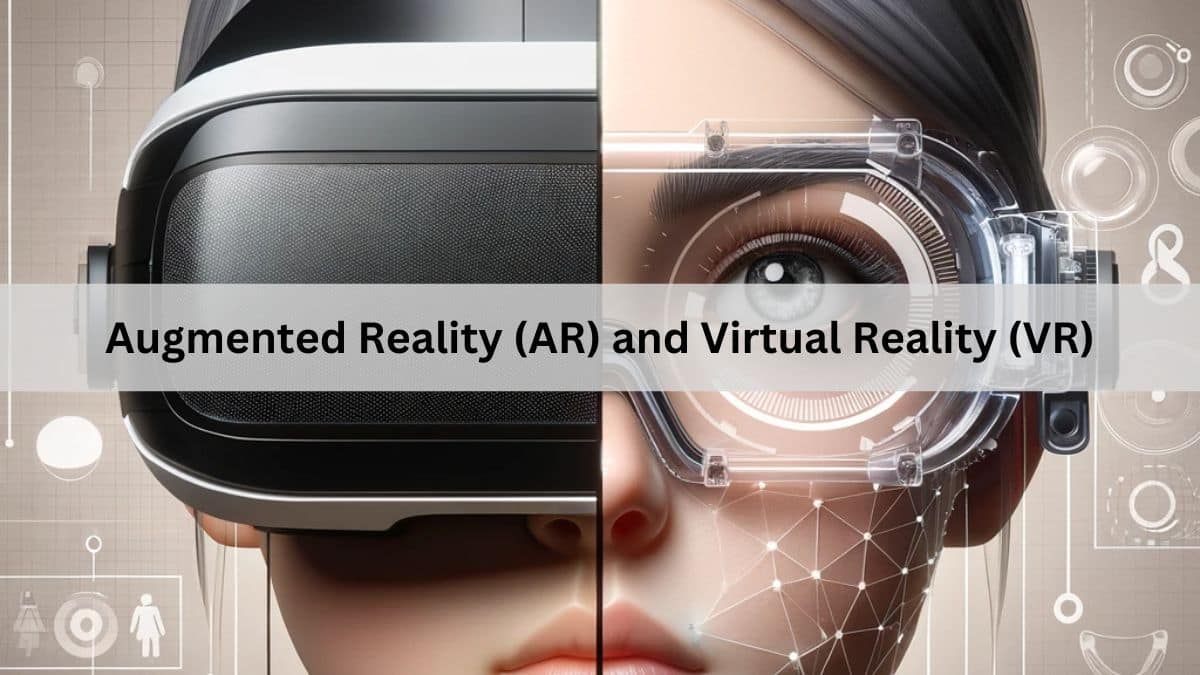Introduction to Augmented Reality (AR) and Virtual Reality (VR)
Augmented Reality (AR) and Virtual Reality (VR) are cutting-edge technologies that blend digital elements with the real world and immerse users in virtual environments, respectively. This article explores the concepts of AR and VR, their applications across industries, benefits, current trends, and future potential.
Understanding Augmented Reality (AR) and Virtual Reality (VR)
1. Augmented Reality (AR)
AR overlays digital information, such as images, videos, or 3D models, onto the real-world environment through devices like smartphones or AR glasses. It enhances user experiences by adding contextual information and interactive elements.
2. Virtual Reality (VR)
VR creates immersive, computer-generated environments that simulate physical presence in imaginary worlds or real-world scenarios. Users typically experience VR through headsets that provide 360-degree views and spatial sound for a fully immersive experience.
Applications of AR and VR
1. Gaming and Entertainment
AR and VR revolutionize gaming experiences by creating interactive environments, realistic simulations, and augmented gameplay elements. Entertainment industries leverage these technologies for immersive storytelling and virtual experiences.
2. Education and Training
AR and VR enhance learning by providing interactive simulations, virtual field trips, and immersive training scenarios. Educators and trainers use these technologies to engage students, enhance retention, and practice skills in realistic environments.
3. Healthcare and Medicine
AR aids surgeons with real-time data visualization during operations, while VR enables therapy for patients with anxiety disorders or phobias through exposure therapy in controlled virtual environments.
Current Trends in AR and VR
1. AR for Marketing and Retail
Retailers use AR to enhance shopping experiences with virtual try-ons, interactive product demonstrations, and augmented store navigation. AR marketing campaigns engage consumers through interactive content and gamification.
2. VR in Architecture and Design
Architects and designers utilize VR for immersive walkthroughs of building designs, virtual modeling, and collaborative design reviews. VR simulations enable stakeholders to visualize spaces and make informed decisions.
Future Potential of AR and VR
1. Extended Reality (XR)
The convergence of AR, VR, and mixed reality (MR) under Extended Reality (XR) enhances seamless transitions between virtual and physical worlds. XR technologies will blur boundaries and create interconnected digital experiences.
2. Innovations in Interaction and Interface
Advancements in haptic feedback, gesture recognition, and spatial computing will refine user interactions in AR and VR environments, enhancing immersion and realism.
Conclusion
Augmented Reality (AR) and Virtual Reality (VR) are transformative technologies with vast potential to redefine industries, enhance experiences, and drive innovation in the digital age. As these technologies evolve, businesses, educators, healthcare providers, and consumers alike stand to benefit from immersive, interactive, and engaging applications.
Whether you’re exploring new entertainment experiences, integrating AR/VR into education and training programs, or leveraging these technologies for business growth, understanding their capabilities and applications is key to unlocking their full potential.


